Hakoniwa
我們不容易真正認識自己,因為面對自我的本質太反人性。 因此,我們都在尋求一種媒介,例如 藝術,音樂或著其他的任何事物,以它們的迴聲和反射來捕捉我們自己。 而我用Hakoniwa箱庭和立式屏風作為媒介 ; 因為在這些人造微型世界裡,我看見它們在幻想,驕傲和恐懼中體現了我們。
We hardly know who we are because facing our own is just too anti-human. So, we seek a medium like art, music, or something more, to capture our own in their echo and reflection. In this context, I am inspired by miniature worlds, like Hakoniwa and standing screens which embody us in fantasy, pride, and fear.
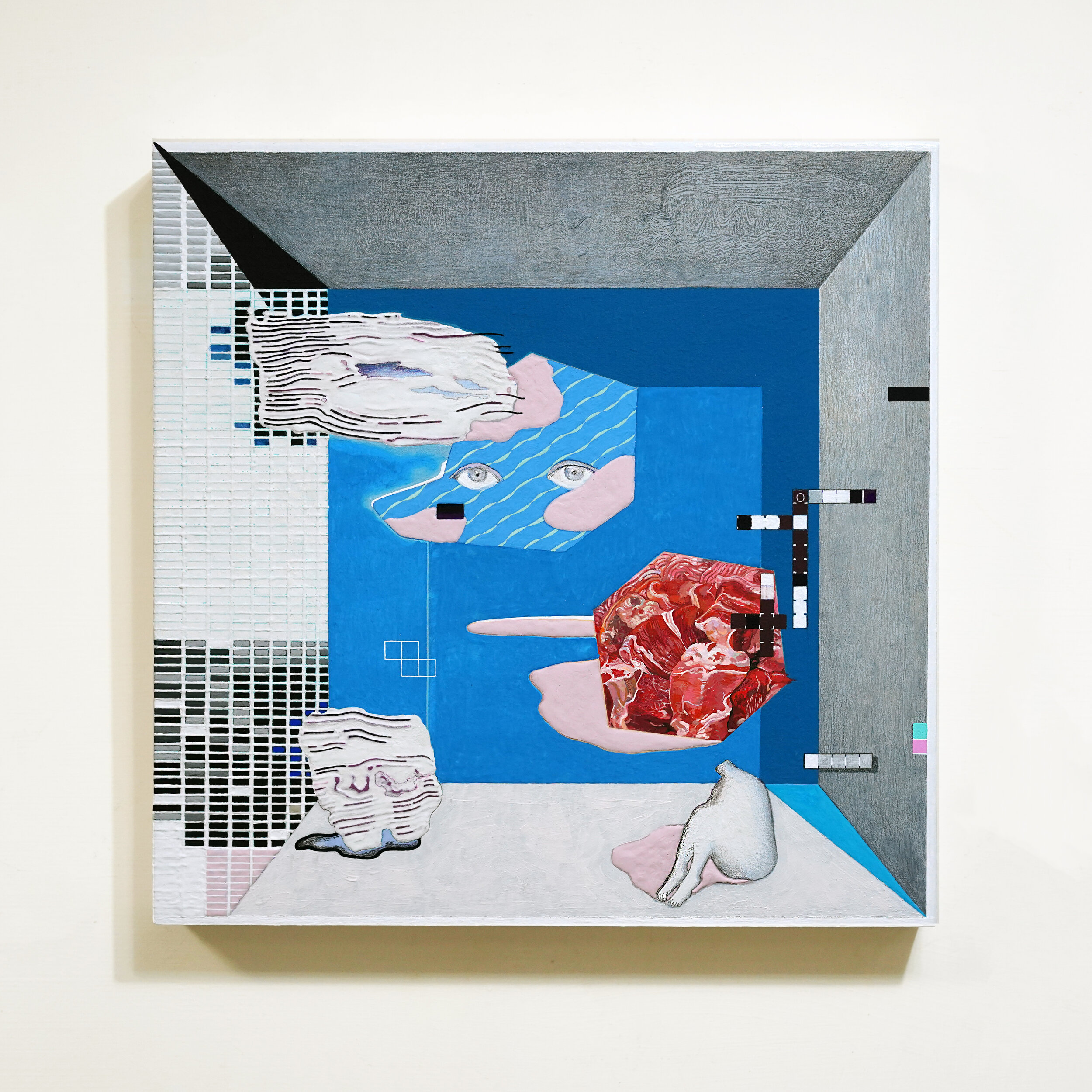
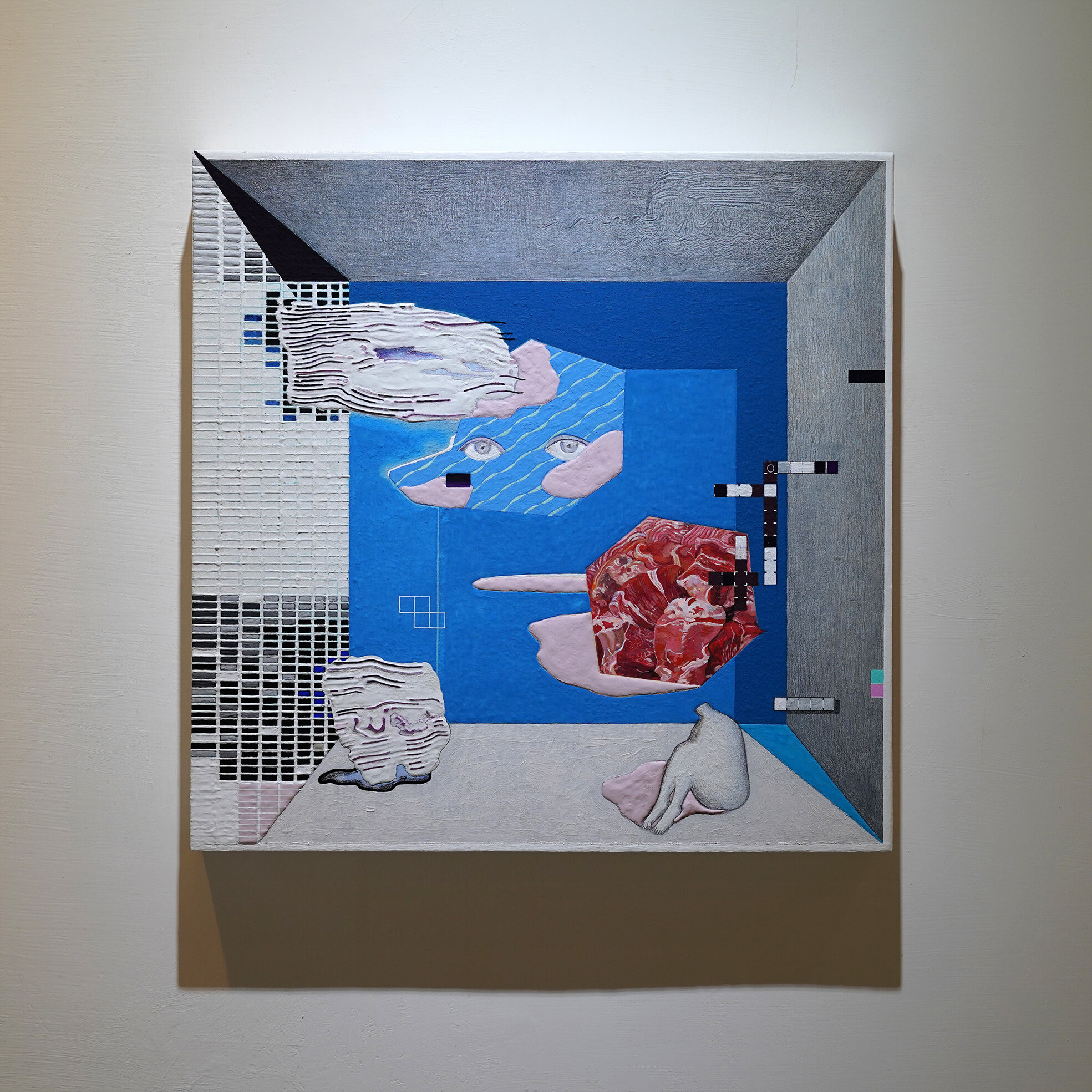

箱庭 - 回顧中的回顧
45 x 45 x 5 cm 木板,膠彩,壓克力,色鉛筆, 棉布 2020
為了創建一個僅呈現思想和特質的人,我回顧了一個假想的人的形象,並將這些元素收集到了這幅作品中。 回顧是無形的思想,因此,回顧不會被任何既定輪廓所佔據,並會以開放的視角帶來好奇。 當觀者嘗試理解這些線索時,他們將自動回顧自身對何謂一個人的理解。 換句話說,在觀者的幫助下,我的作品將成為 (我)回顧(被你)的回顧,這是一項實驗性的作品,使人們在沒有刻板印象的情況認識。
Hakoniwa - Retrospection of retrospection
45 x 45 x 5 cm wood, Gouache, Acrylic, color pencil, cotton. 2020
To create a person who is reviewed only in thoughts and traits, I retrospected what a person should be like and collected these elements into this artwork. Retrospection is invisible thoughts, therefore, they would not be occupied by any contour and would raise questions in an open-mind way. Thus, while you try to understand these clues, you will automatically retrospect your understanding of who a person is. In other words, by your help, my artwork becomes a retrospection of retrospection, this is an experimental practice that makes individuals meet without stereotypes.
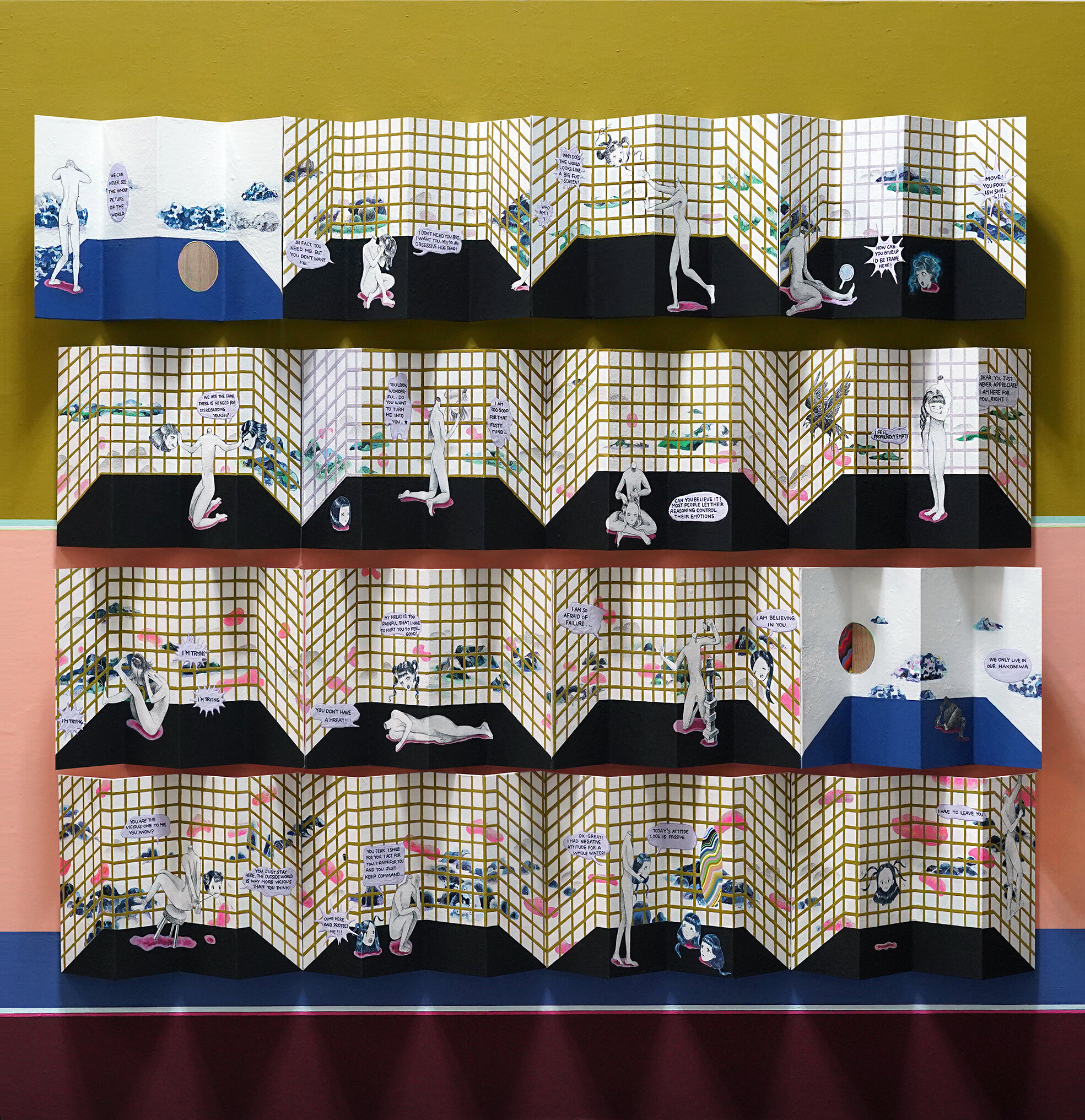
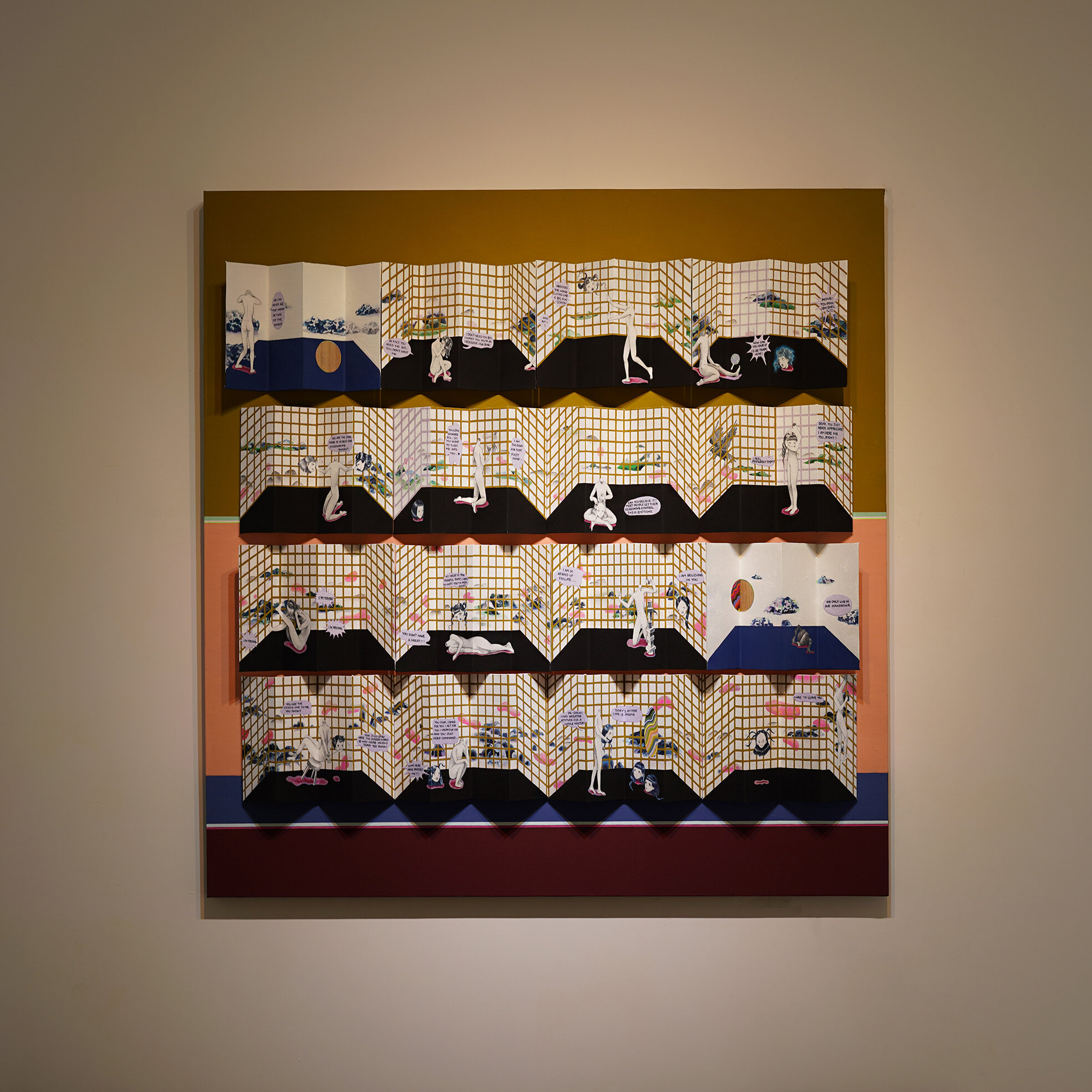
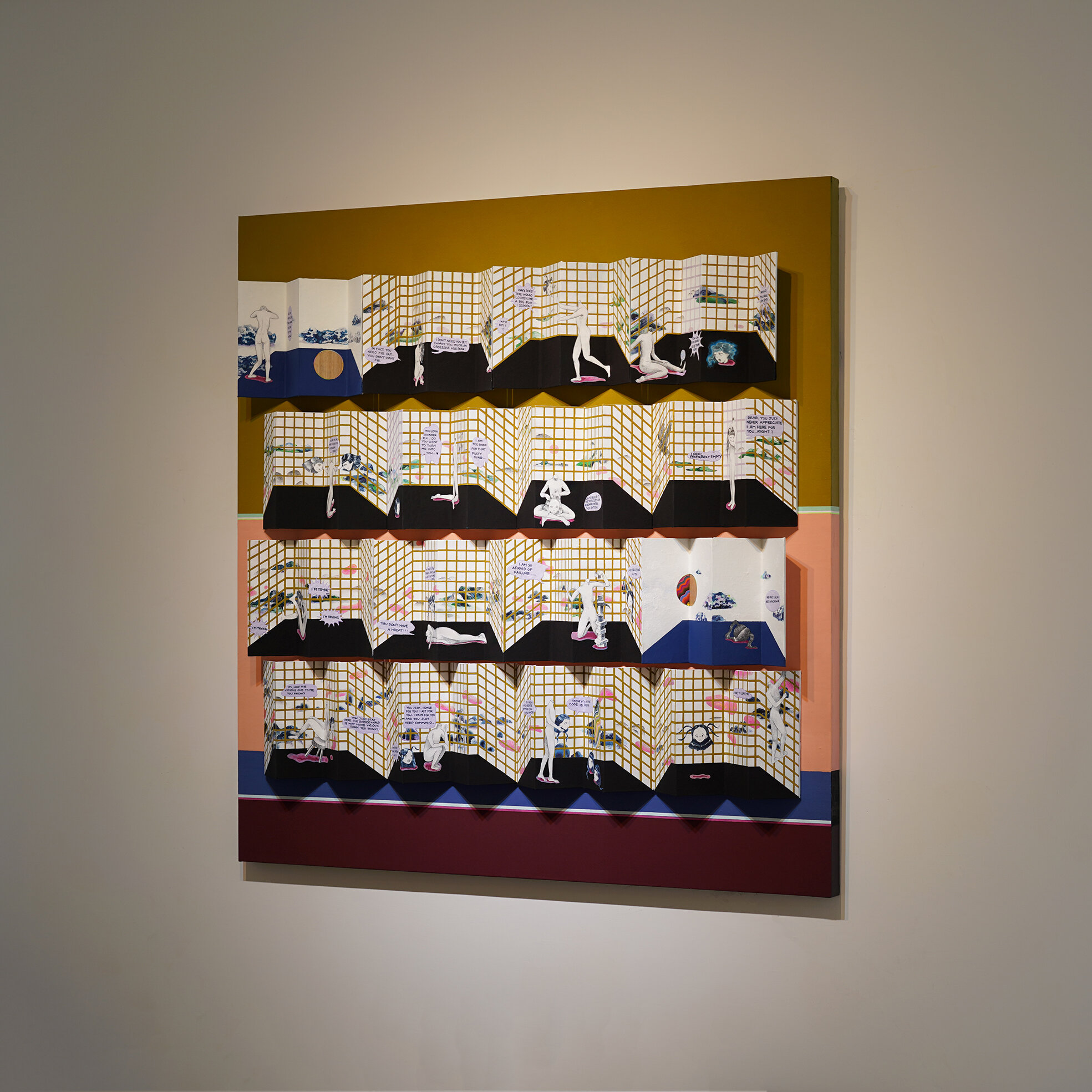
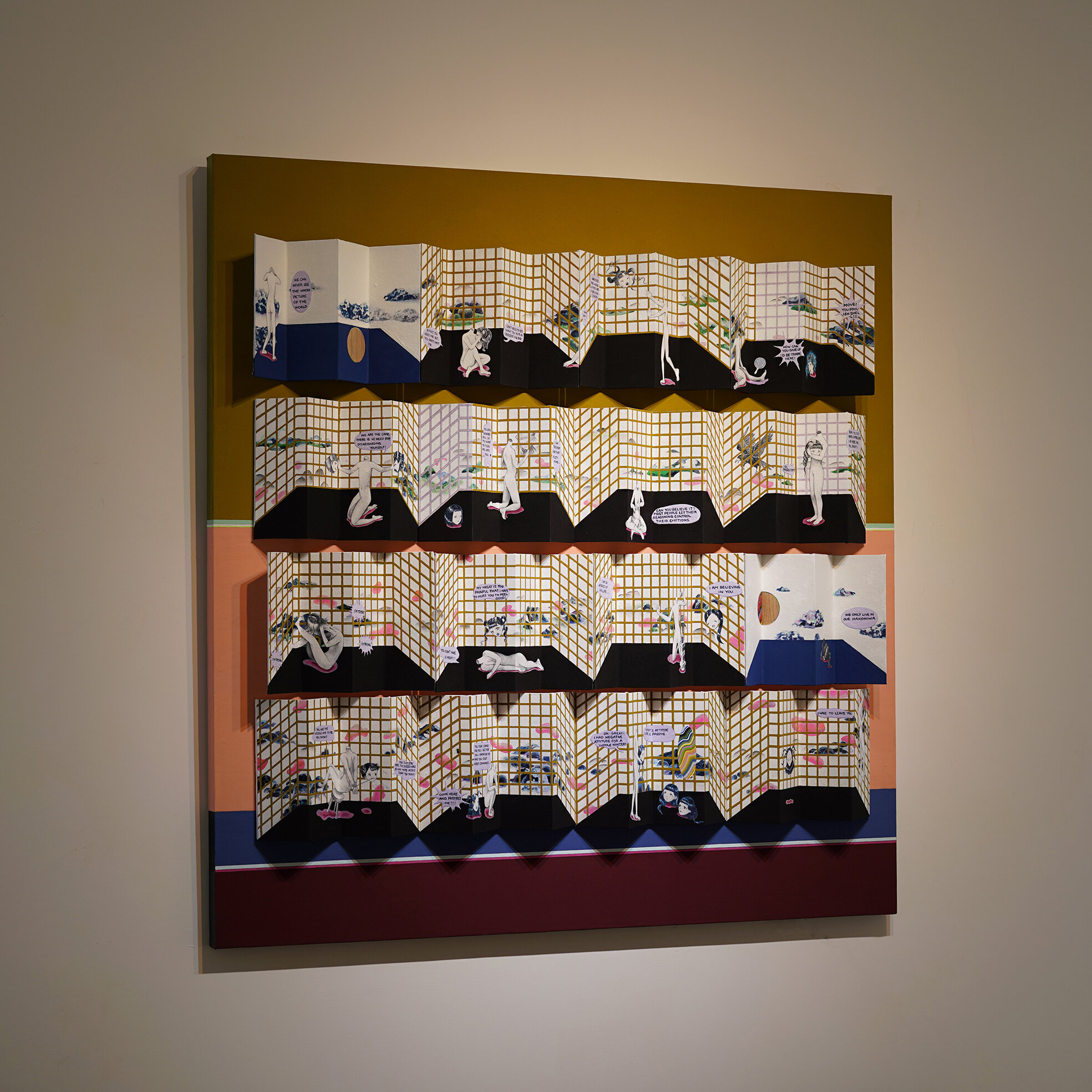














箱庭 - 審視中的審視
115 x 111 x 13 cm 木作,木板, 膠彩,壓克力,色鉛筆, 棉布 2020
這件作品表達了不同人描繪每時每刻在思想後端系統中的自我糾結與幻想的情境。 人無法擺脫生存的焦慮,因為一部分的自己將永遠無法被他人和我們自己所理解。 我用喜劇式的 諷刺對白指出思維與行動之間的矛盾。 尤其是當觀看者從不同角度觀看作品時,對話的含義將因 為立屏的結構而有所轉變。 這種結構代表著在不同時空下,我們行為和思想上的不一致,使得一 切看起來是如此的熟悉且異樣。 然而,當我們意識到連自己也無法完全理解自己的事實時,一切 都將變得合理。 存在所帶來的孤獨至少有一半不歸咎於誰。
Hakoniwa - Inspection of inspection
115 x 111 x 13 cm wood, Gouache, Acrylic, color pencil, cotton. 2020
This artwork portrays our every moment dilemma and imagination in our back-end system. We cannot escape from anxiety of existence because some parts of us can never be understood, to others and to our own. I use comical sarcasm to point out the contradiction of thinking and acting. Especially when the viewer looks at the artwork from different angles, the meaning of dialogue would be converted by the standing-screen structure. This structure connotes a different space-times in our daily lives to display our inconsistency in actions and thinkings. However, everything is going to be reasonable when you finally realize the fact that even you cannot understand yourself. At least half of your loneliness is uncalled for.
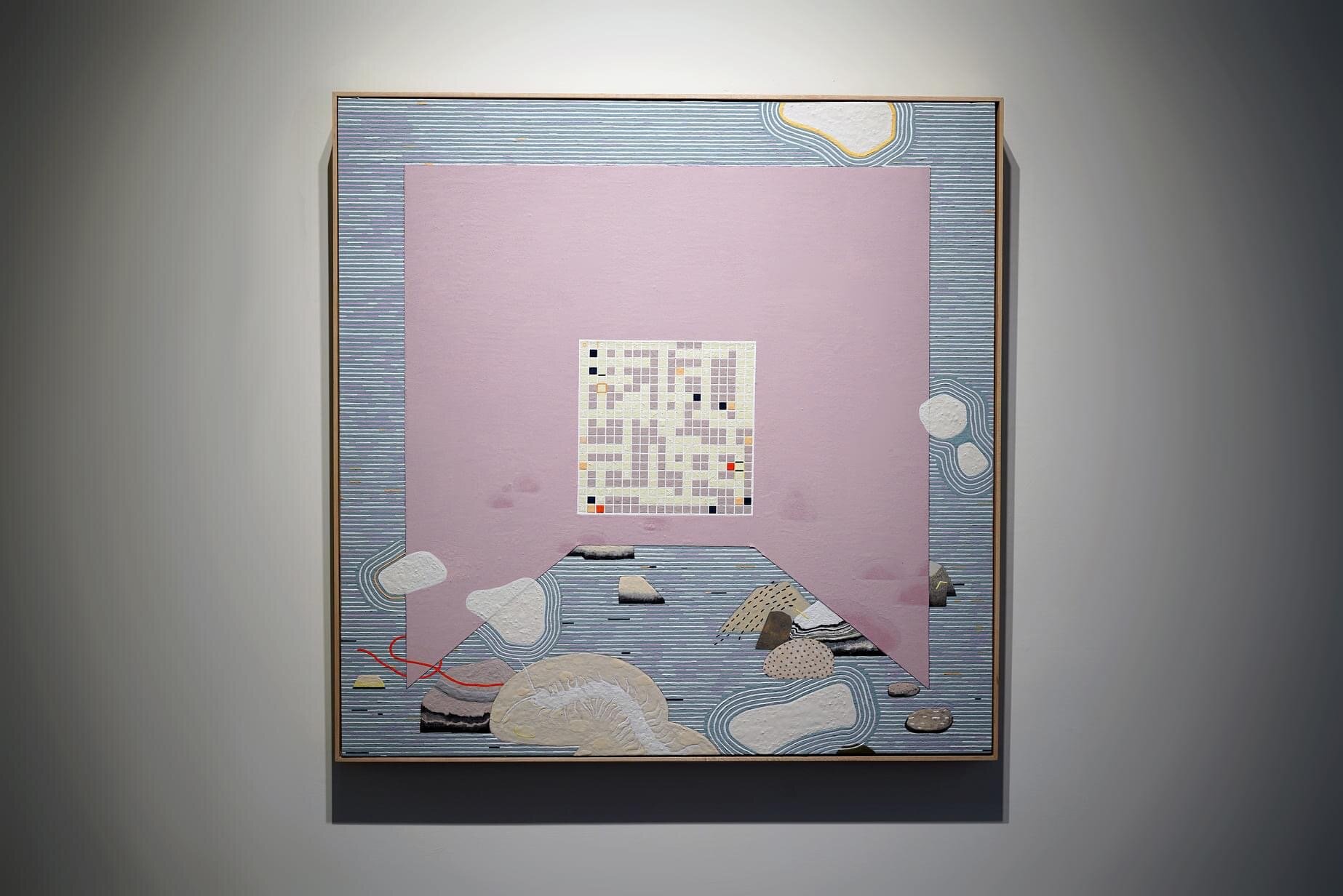

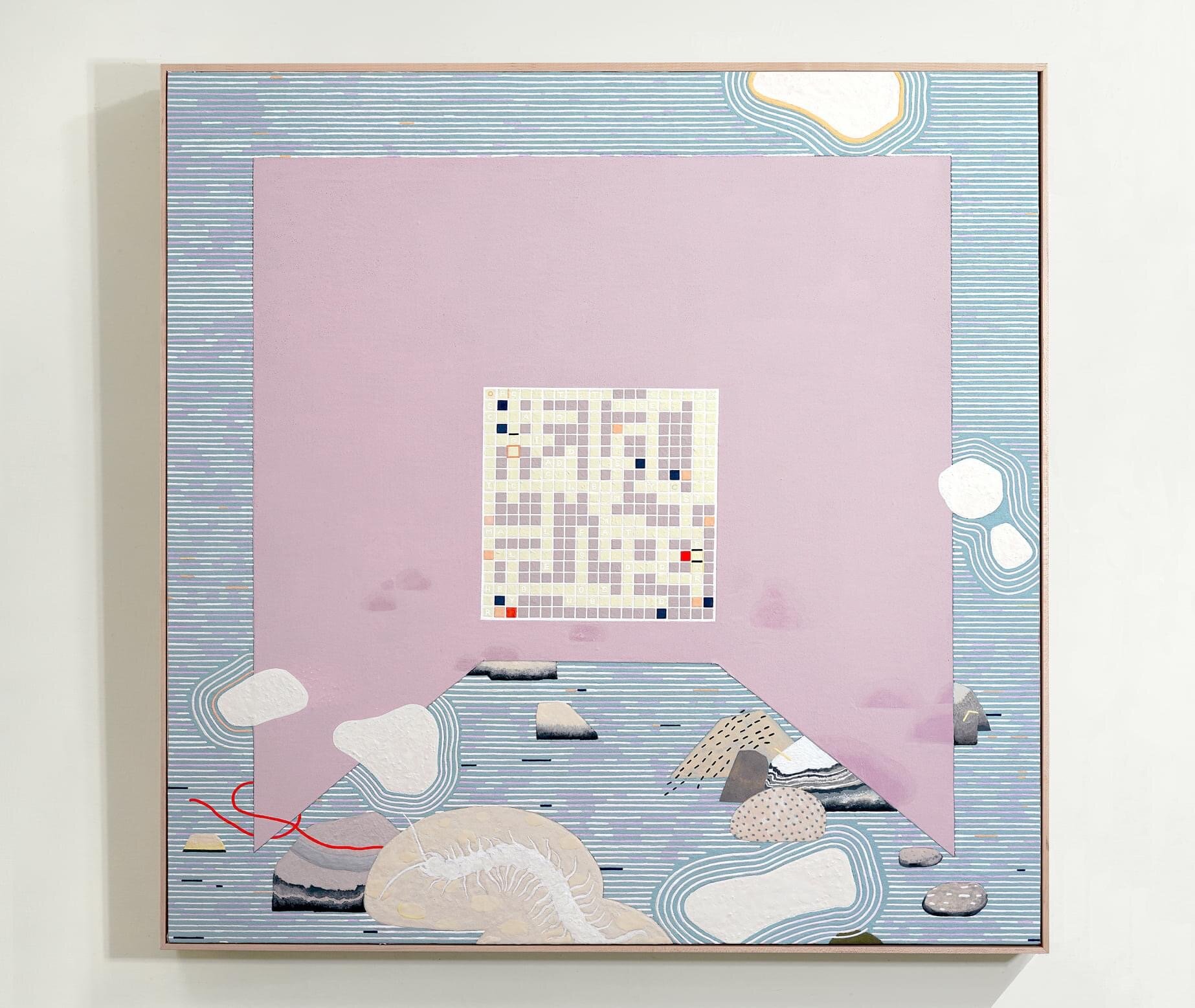
箱庭- 觀點中的觀點
77 x 77 x 5.5 cm 木作,木板, 膠彩,壓克力,色鉛筆, 棉布 2020
「視點並不侷限在一個視點,而是從任一角度切入,都可以得到完整風景之計畫式庭園。也就是說,從所有的細節各自開始,都可以掌握到全局。」 ______ 黑川雅之
我們不需要透過別人的角度來透視一件事。 沒有事情是重要的,如果你不覺得重要。
在無序統治的世界,讓我們的直覺發揮作用。
這件作品帶來"不同性格可以共存在一個人身上的想法" 。 畫面是多種角度重疊的日式庭院,有俯視角、正視角、遠觀與微觀、具象視角與抽象視角。每一個觀點角度都很不同,卻在同一個畫面裡豐富了彼此。
HAKONIWA - Perspective of perspective
77 x 77 x 5.5 cm wood, Gouache, Acrylic, color pencil, cotton. 2020
We don’t need angles. We don’t need perspective.
Nothing matters if you don’t feel it matters. Entropy rules: let your intuition do its job.
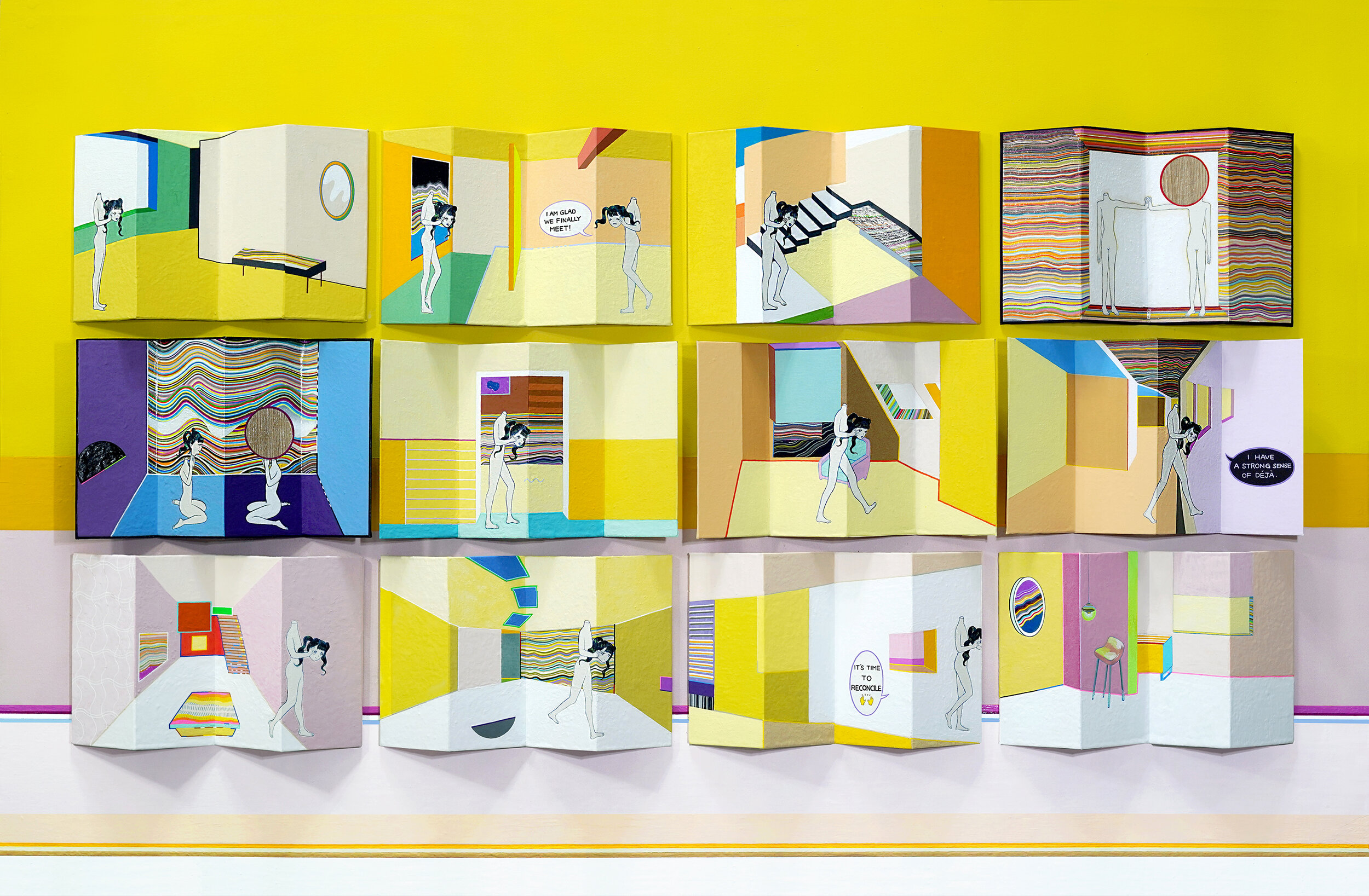
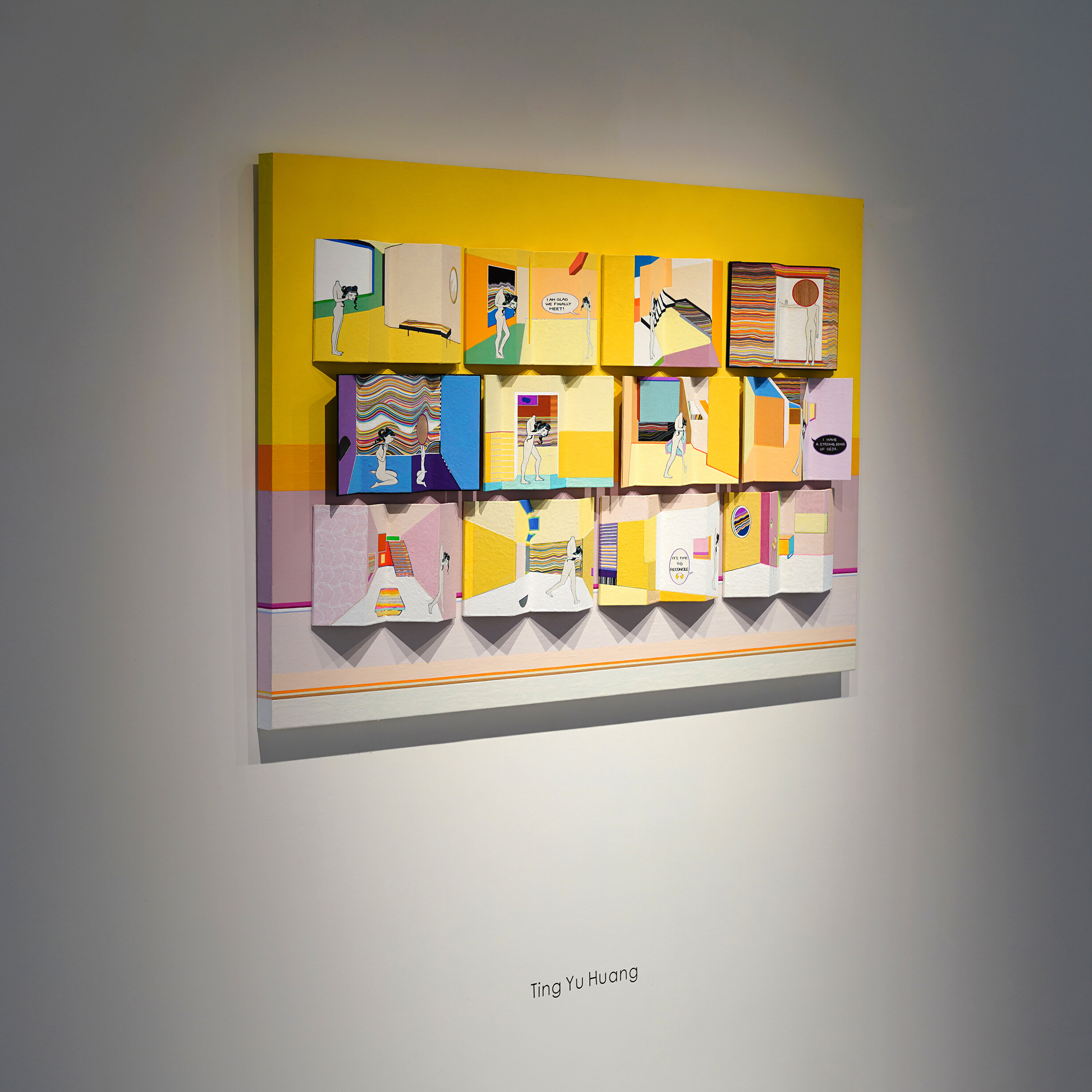
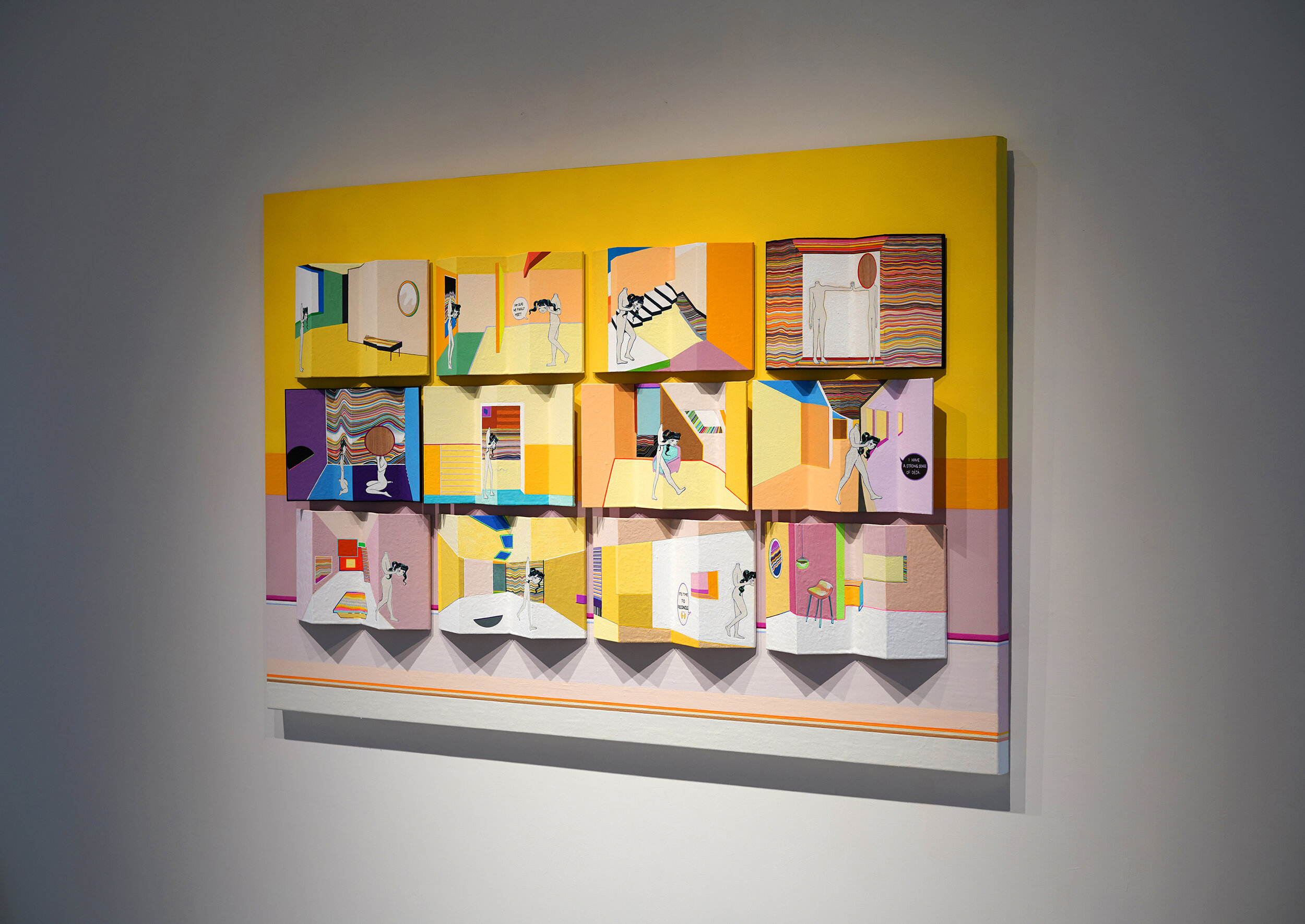
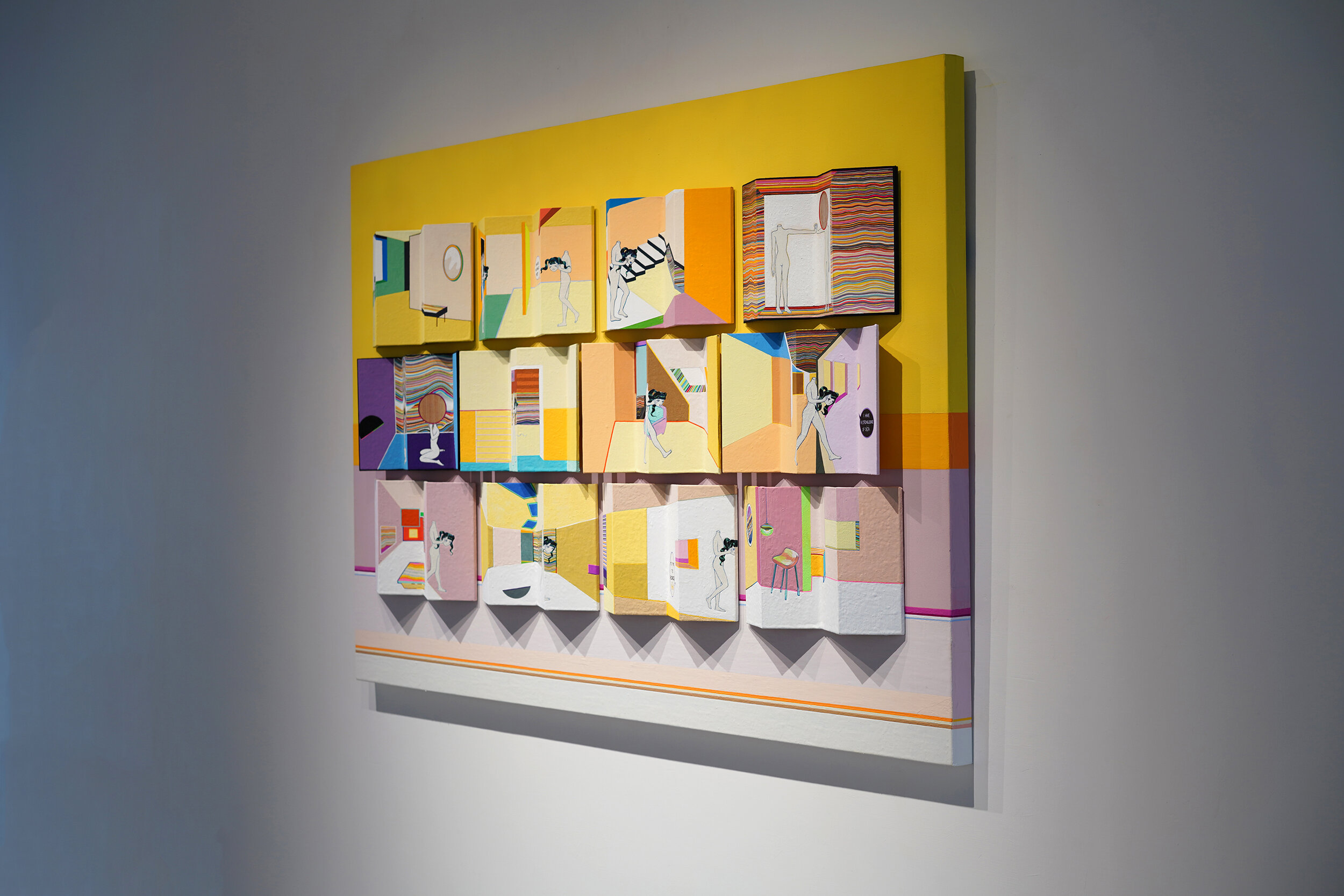

箱庭 - 面向中的面向
145 x 95 x 9.5 cm 木作,木板, 膠彩,壓克力,色鉛筆, 棉布 2020
我想在這幅作品中呈現意識的連續性和會變化的特質。
假設我們一次只能知道自己的一個面向, 我們何時會發現自己與上一個狀態的自己有所不同了? 我使用一系列小畫面來展示各種階段的自 我。 每張小畫面都和其前後畫面色調看起來是相似的,但帶有新的差異。 因此,當我們看第一張和最後一張畫面,差異累積,它們變得非常不同。 然而,總體來說,每張小圖仍然集結成了 協調的色調與感受。通過這件藝術品,我消除了時間的線性並一次展示每個時期的自我意識。 我們的過去出現在我們 的未來,而我們的未來迫切希望與我們的過去和解。 面向疊加面向,我們從來都不再一樣,但更加完型。
Hakoniwa - Aspect of aspect
145 x 95 x 9.5 cm wood, Gouache, Acrylic, color pencil, cotton. 2020
I want to present the continuum and unstable quality of self-consciousness in this artwork. Let’s assume we can only know one aspect of ourselves at a time. Then, when is the moment that you notice you are different from the last you? I use a series of small pictures to present each version of ourselves. Each small picture looks alike between its front and back one but with a tiny difference. Therefore, when we look at the very beginning and the end, they become very different. Although altogether, every small picture still combines a very cohesive palette. Through this artwork, I removed the liner of time to display each period of self-consciousness at once. Our past appears in our future, and our future desperately wants to reconcile to our past. Aspect plus aspect, we never can be the same again but are gestalt.

